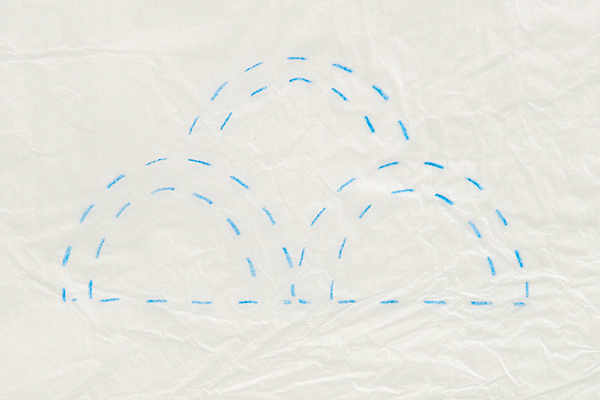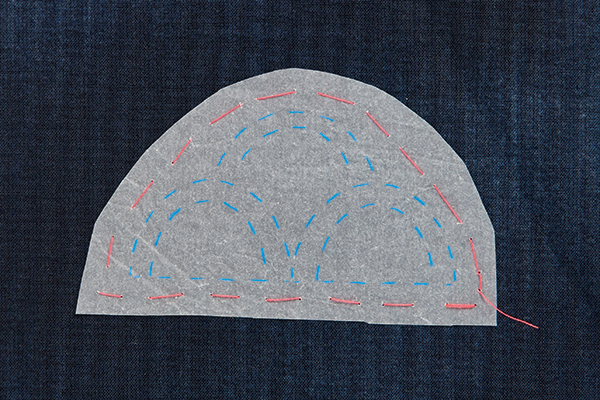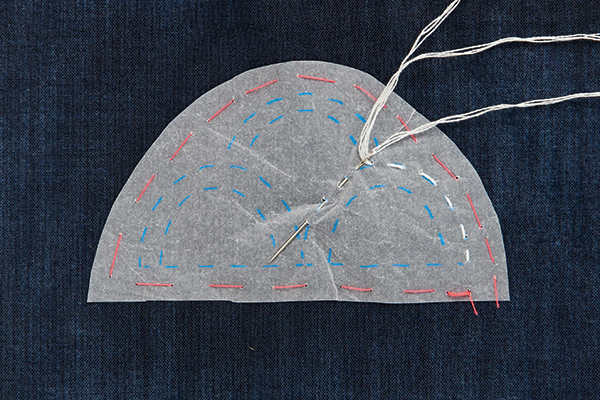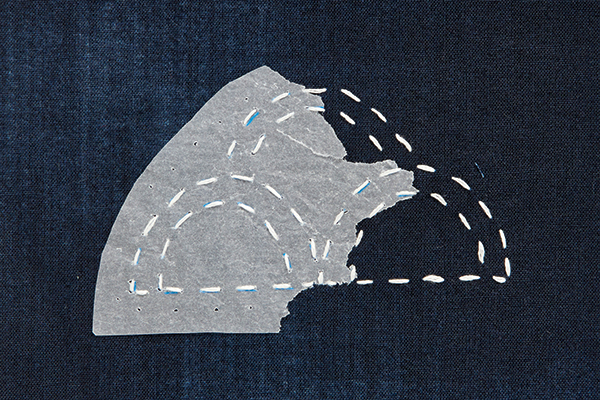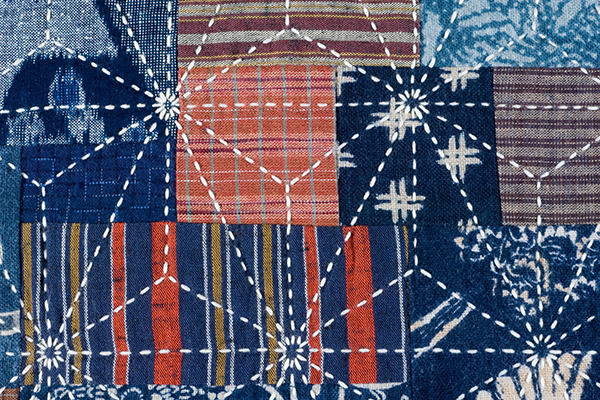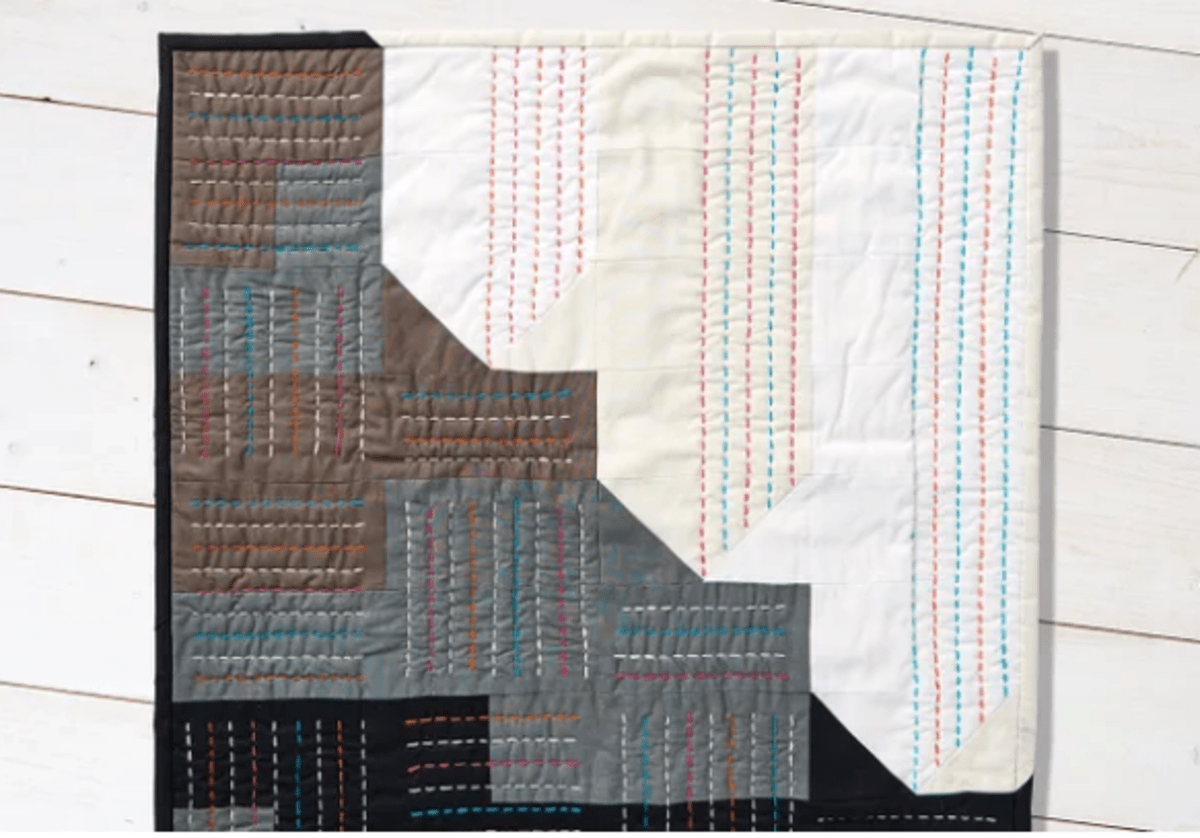How to do Sashiko embroidery
We’re all about personalising the things we wear, and Sashiko embroidery is the perfect way to give a plain garment a bit of wow-factor. This ancient Japanese embroidery technique offers the opportunity to show off your sewing skills and subtly customise a simple item of clothing or decorate homewares.
Read on to discover all about this fun embroidery technique, or use these handy links to go directly to each section:
- What is Sashiko embroidery?
- How to do Sashiko embroidery
- Free Sashiko embroidery plant pot patterns
- Free Sashiko Cloud embroidery pattern
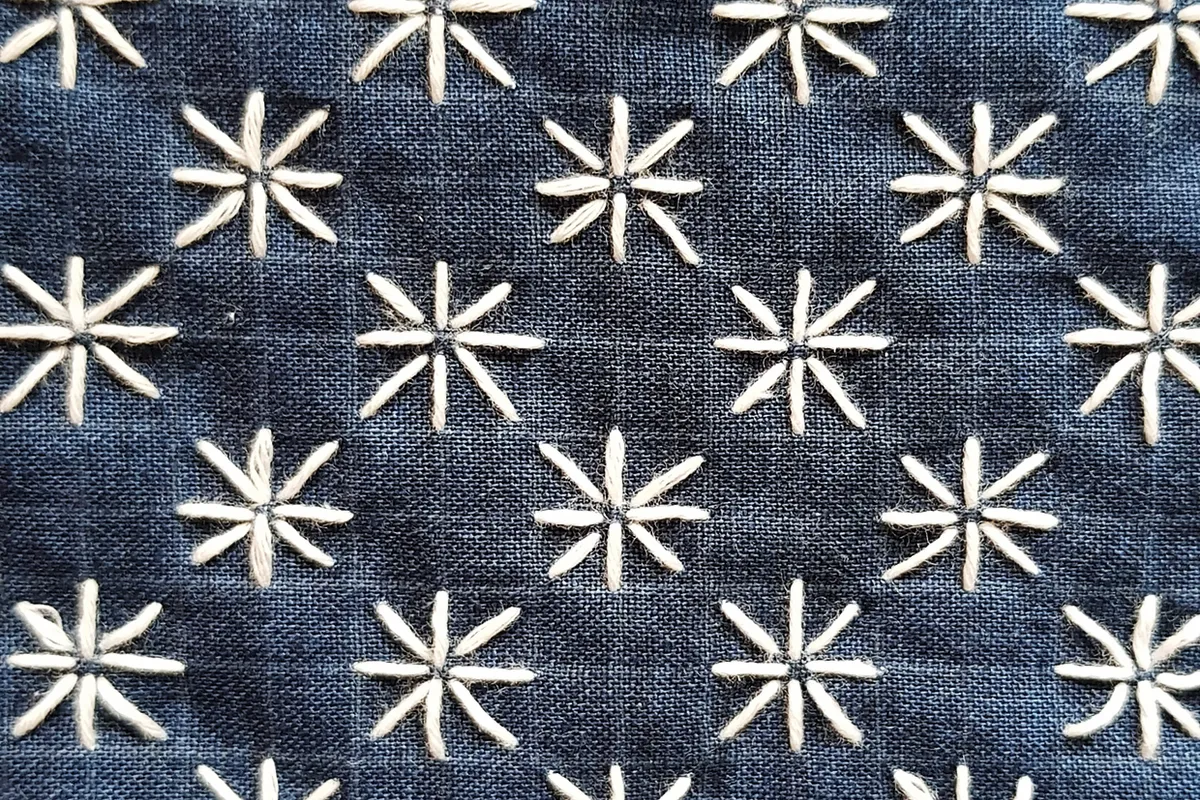
What is Sashiko embroidery?
A form of decorative reinforcement, or functional embroidery, Sashiko stitching originated in Japan out of practical need during the Edo era (1615–1868). Originally it was used to stitch together layers of fabric for extra strength and warmth, and also for mending worn garments.
It’s created from running stitch, which is one of the easiest embroidery stitches to use and learn. Modern Sashiko takes inspiration from traditional designs and uses them for more decorative purposes on bags, garments, quilting panels and many other creative projects.

Using a clean contrasting thread, Sashiko is effortlessly elegant, and it’s a clever (and quick) way to add a personal touch to shop-brought garments and gifts. Oh, and did we mention, it's really easy to get to grips with too?
Next we'll show you the basics of how to do Sashiko embroidery. Once you've got the hang of it, you can practise your new skills with our two Sashiko embroidery plant pot patterns which are the perfect Sashiko projects for beginners. You can also try adapting the technique to use with shapes with our Free Sashiko Cloud embroidery pattern to add cloud motifs to fabrics.

Saving the planet with Sashiko
As well as looking fantastic, Sashiko stitching can also be used to repair old and worn clothes.
Check out our tutorial on how to do Sashiko mending and see what you can rescue from your wardrobe!
How to do Sashiko embroidery
Step 1
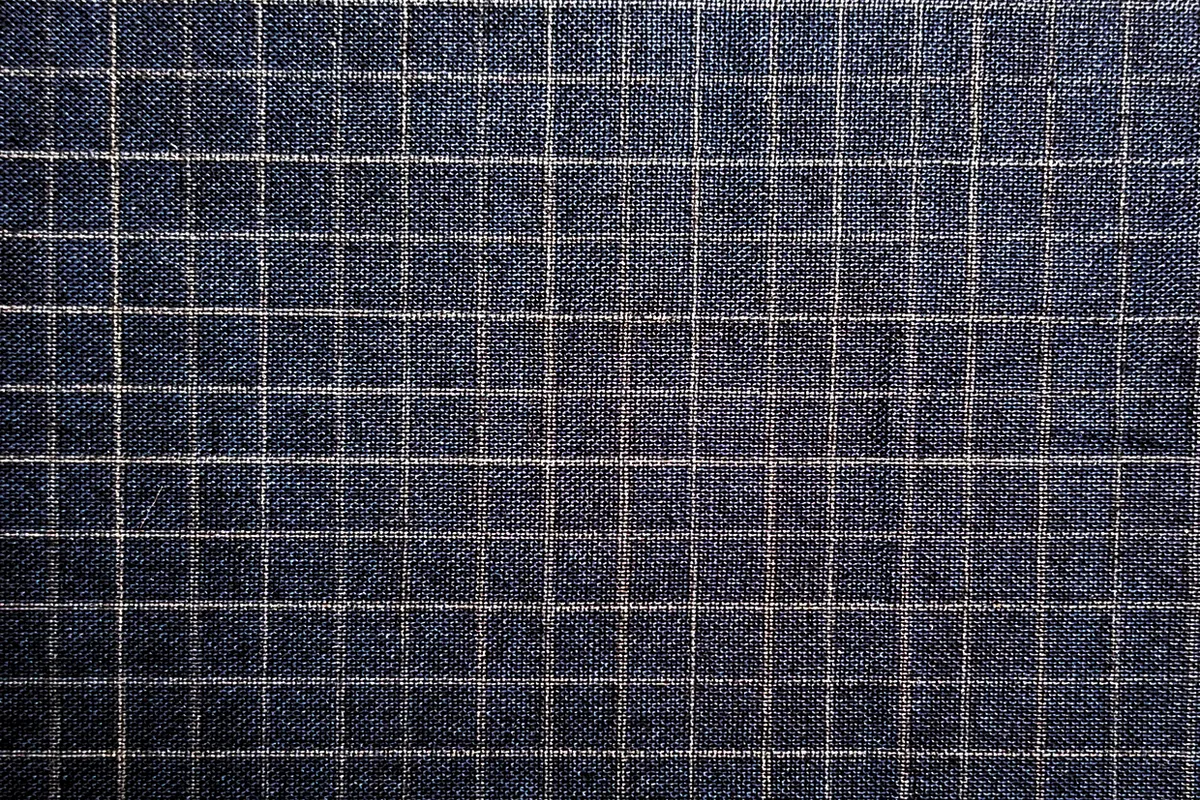
There are different ways of transferring designs onto fabric and for this project we have used a grid base that can be marked directly onto the fabric.
Measure and cut your fabric and then press flat. Lay the fabric on a table, securing with masking tape. Using a marking pen and a clear ruler, create a 5mm grid. Choose a colour of pen that will show up on your fabric.
Step 2
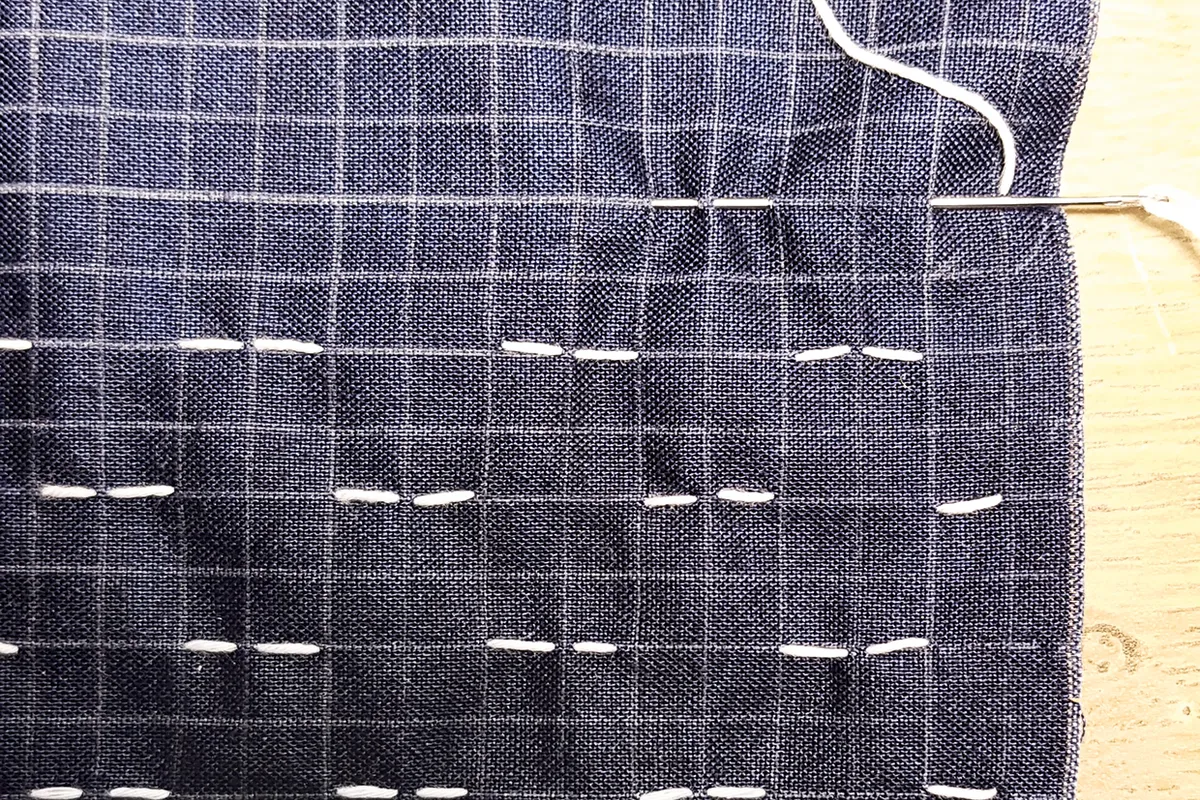
Tie a knot in your thread and work Running Stitch over and under the fabric following the pattern on the fabric leaving a gap where the gridlines meet. Don’t pull the stitches too tightly and try to keep working in rows.
Use a specialist Sashiko needle if you can, as these tend to be longer than regular embroidery needles, and will enable you to work more stitches at a time.
Step 3
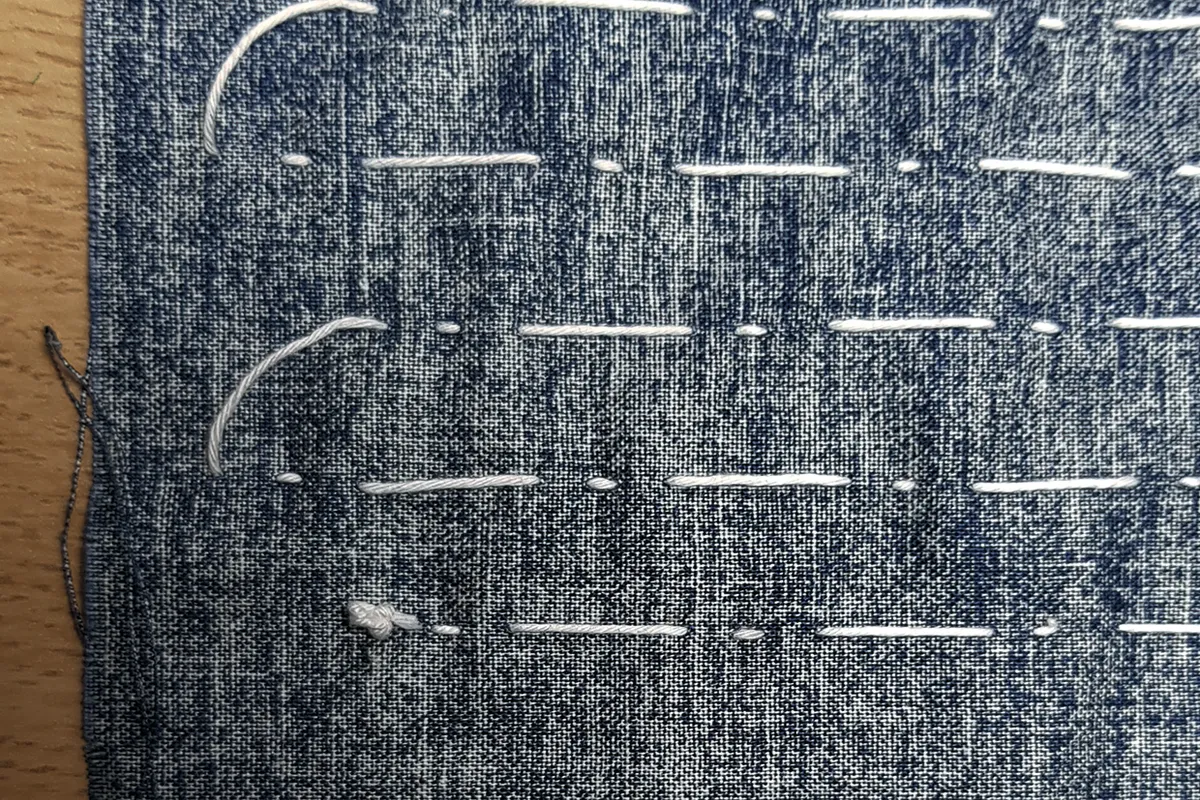
When you reach the end of a row, leave a longer stitch/loop loosely on the back of the fabric to ease from one line to another. This is really important to ensure the tension of the stitching is even.
When you come to the end of the thread, create a knot over the thread on the back to secure. Start another thread with a knot, making sure it is securely fastened on the back.
Step 4
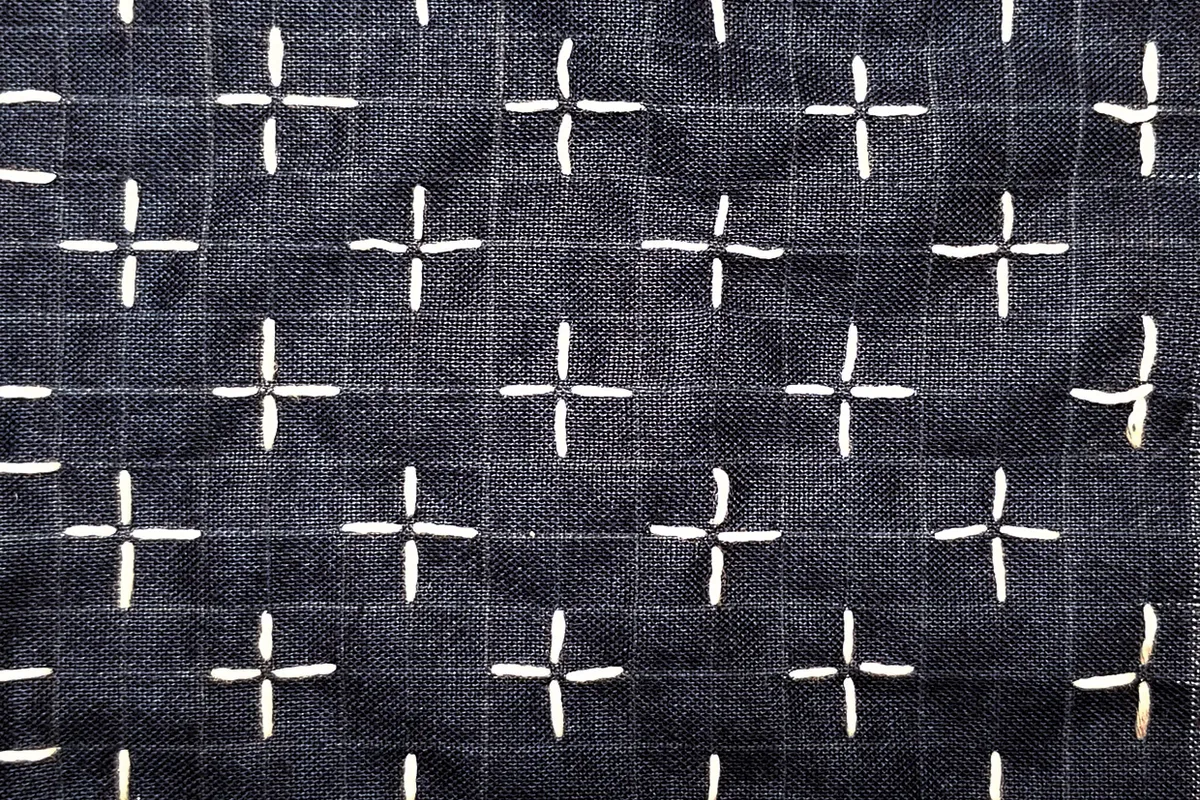
Build a design up by stitching in straight lines in different directions. Where the gridlines meet, space the stitches so they don’t touch each other. This makes a much neater and smoother finish to the stitching.
The gaps between the stitches can be quite small as shown here or larger spaces can be left if you prefer. Experiment until you are happy with the design.
Free Sashiko embroidery plant pot patterns
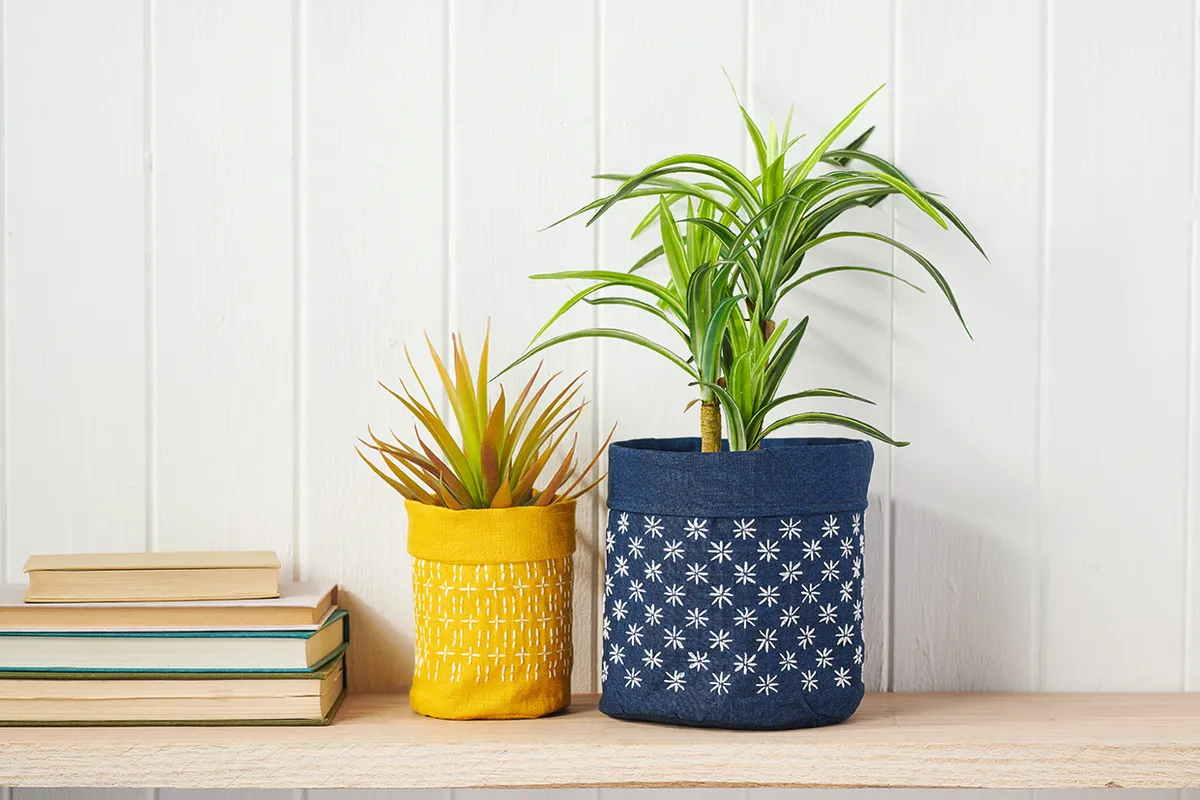
Designed by Cara Ackerman for Love Embroidery magazine issue 2, these two plant pots will show you the basics of building up Sahiko patterns and are ideal Sashiko projects for beginners.
You will need
- Cotton fabric: (large pot: 40x110cm, navy), (small pot: 40x60cm, yellow)
- Medium weight iron-on interfacing: (large pot: 40x60cm), (small pot: 30x35cm)
- White fabric pencil or black heat-erasable pen
- Clear quilter’s ruler
- Sashiko thread: white
- Sashiko needles
- Basic embroidery kit
Step 1
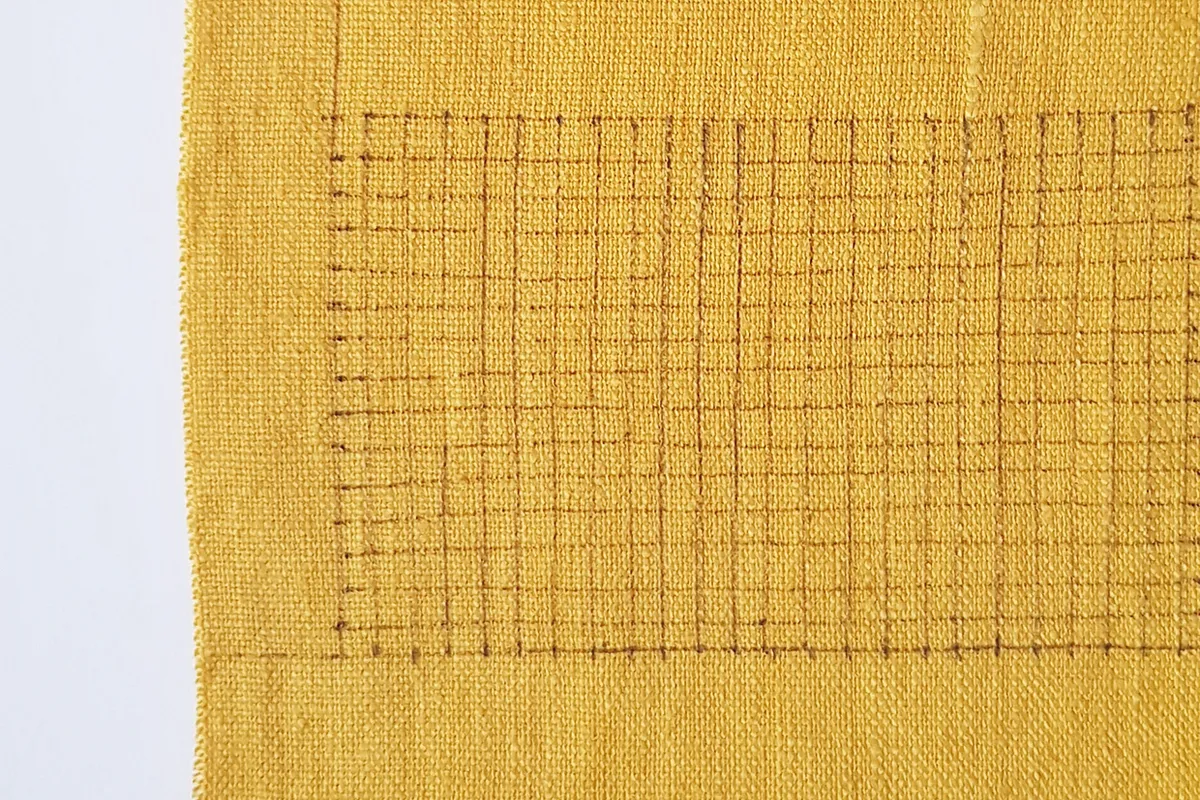
Cut the fabric as follows:
Large pot: two pieces 21x50cm, for the body outer and lining; two 17cm diameter circles for the base outer and lining.
Small pot: two pieces 17x30cm, for the body outer and lining; two 11cm diameter circles for the base outer and lining.
Take the body outer and mark a 5mm grid positioned 2cm from the short side edges and 2.5cm from the bottom long edge. Use a white fabric pencil on dark fabrics or a black heat-erasable pen on light fabrics The grid needs to be 18 squares high for the large pot and 15 squares high for the small pot.
Step 2
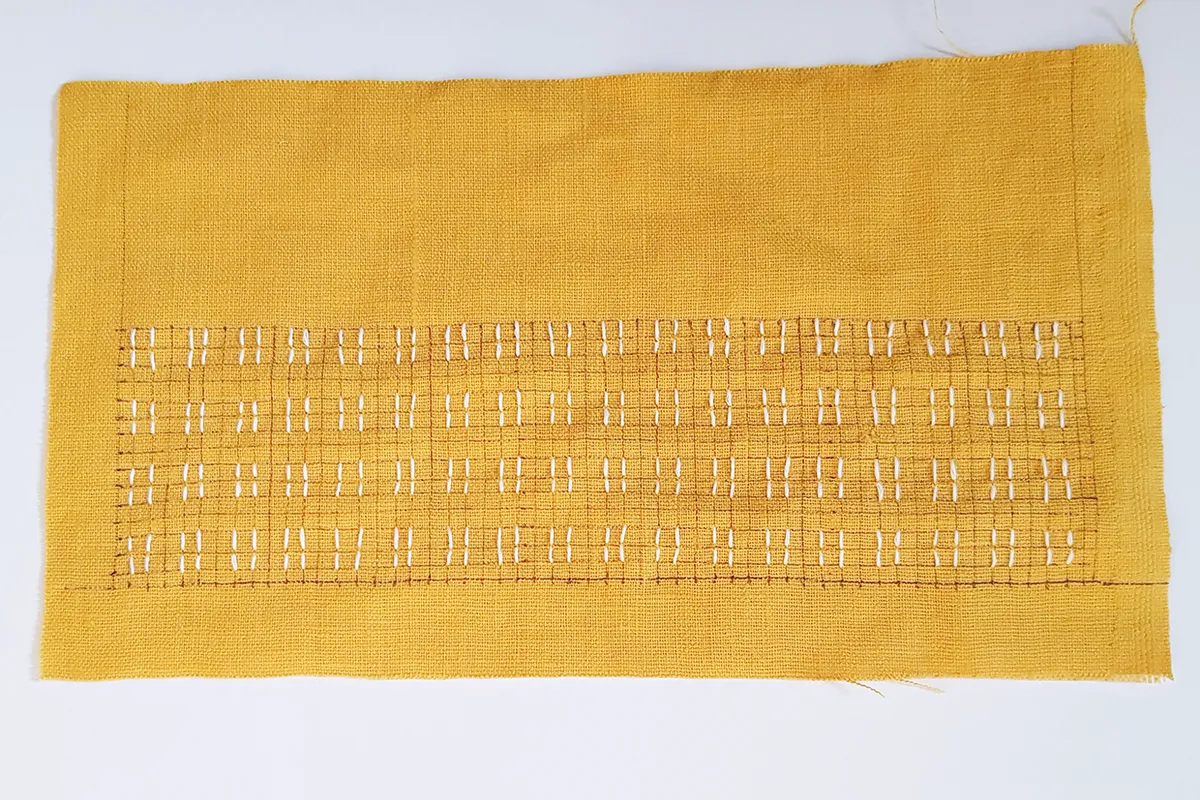
Using white Sashiko thread and a Sashiko needle, stitch the design using Running Stitch. The small pot is stitched by working pairs of vertical lines down the fabric.
Step 3
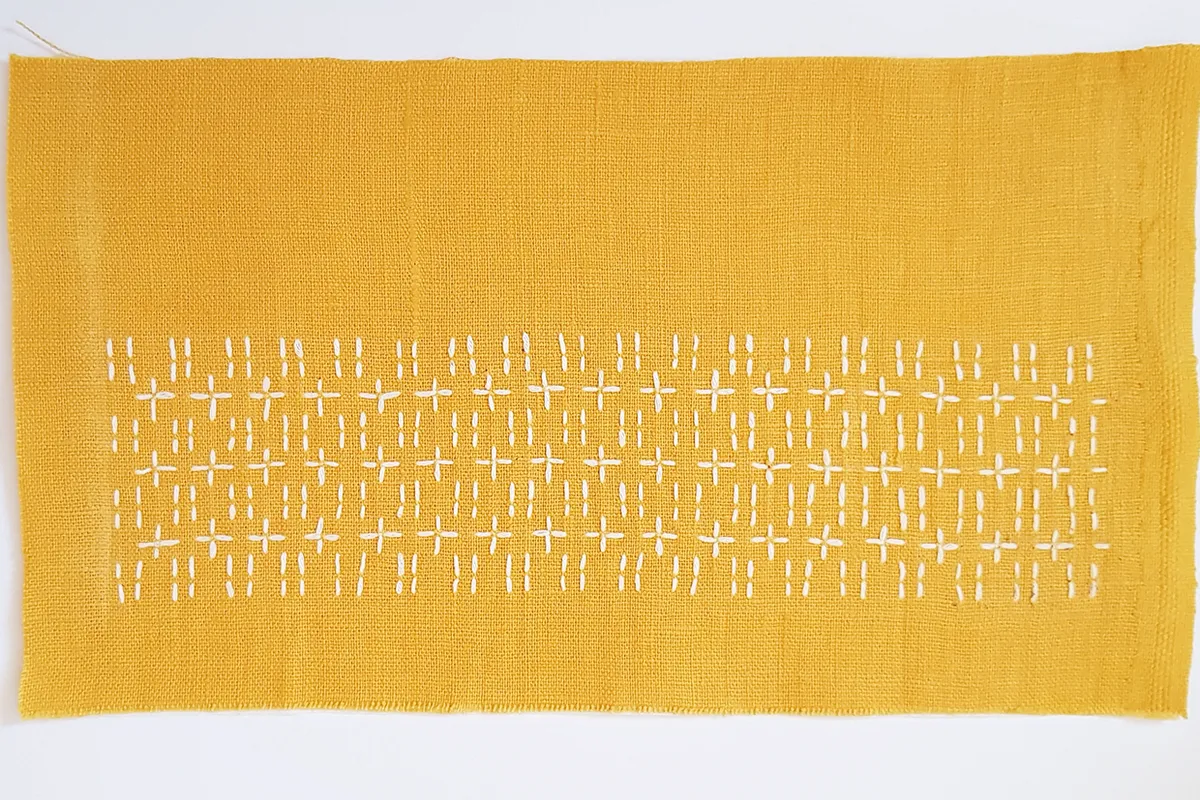
Next, work vertical lines between the pairs, then work horizontal lines across. Work one line at a time, turning at the end of each line.
Remember not to cross the stitches but to leave a gap between them.
Step 4

To work the large pot, stitch the first line following step 2 on the How to do Sashiko embroidery section. Work one line at a time, turning at the end.
Work the next line horizontally to the first, remembering not to cross the stitches.
Finally, work diagonal lines across the fabric – first from bottom left to top right, then from bottom right to top left.
Step 5
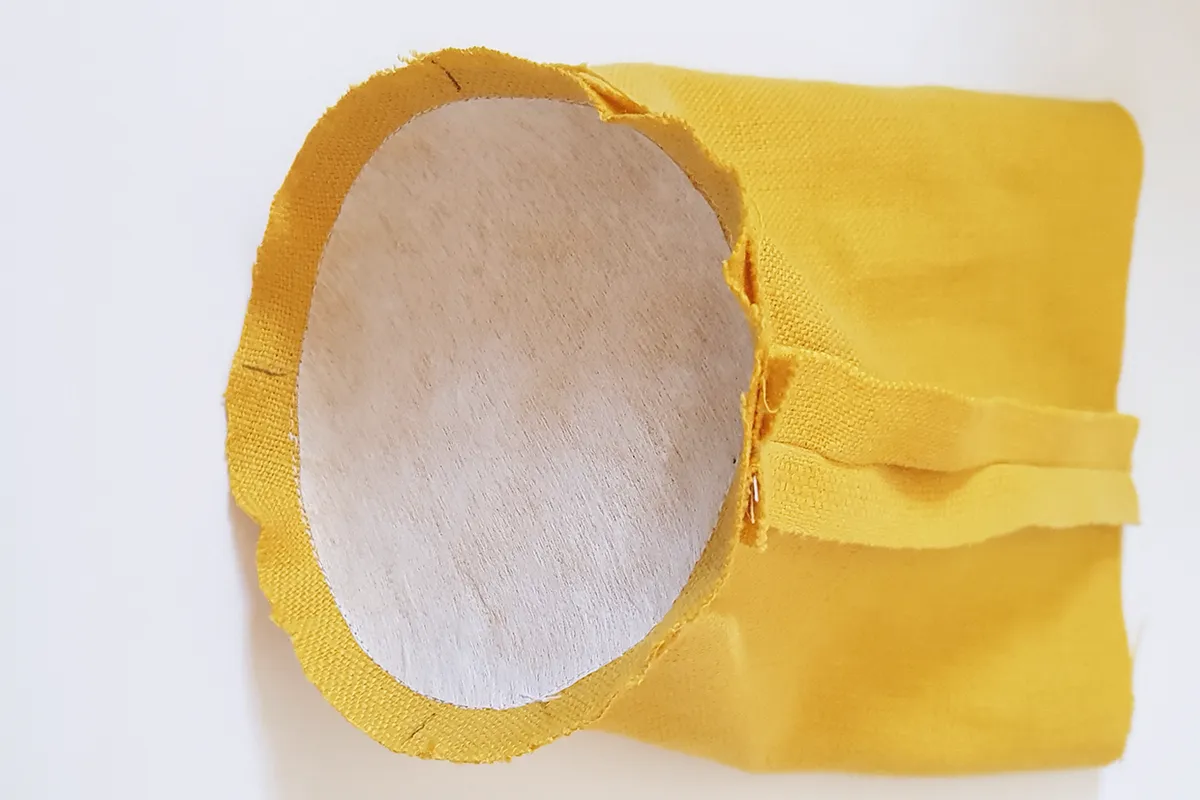
Once the Sashiko stitching is finished, cut interfacing to the same size as the outer body and base. Trim the 1cm seam allowance off all around, then press to the WS of each.
Sew the short edges of fabric RS together. Make quarter marks on the circle and on the bottom edge of the outer body. Pin the outer body and outer base RS facing, matching the marked points.
Stitch together all around, clip the seam allowance and press the seams open.
Assemble the lining in the same way using the lining body and lining base, but this time leave a 3cm turning gap in the centre of the body side seam.
Step 6
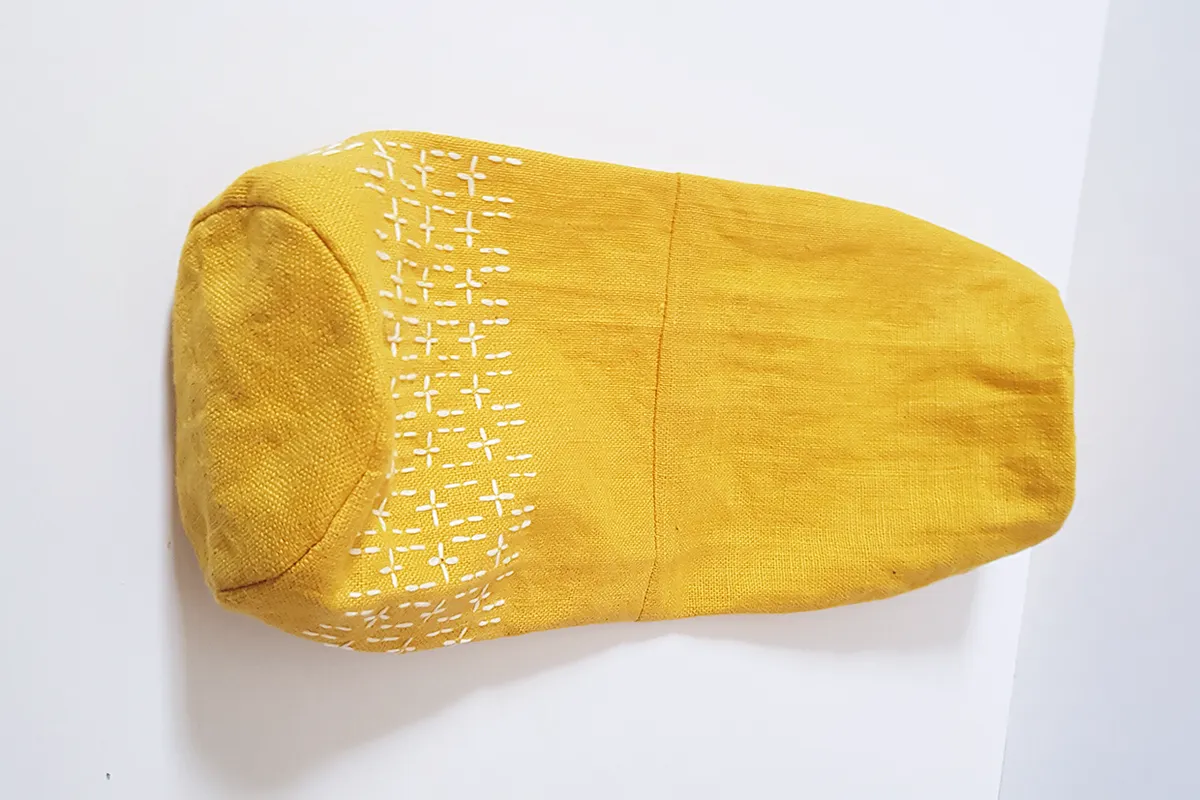
Place the lining inside the outer so they are RS facing and matching top raw edges and side seams. Pin and stitch together. Turn RS out through the gap in the short seam, then slip stitch to close the gap.
Push the lining inside the outer and press. Topstitch around the top edge to neaten and hold the lining in place. Turn the top edge over to make a cuff, then proudly display your favourite plant in the Sashiko pot.


Looking to try more embroidery stitches?
If you love creating decorative lines with stitches, you should check our How to do Stem stitch guide.
Free Sashiko Cloud embroidery pattern
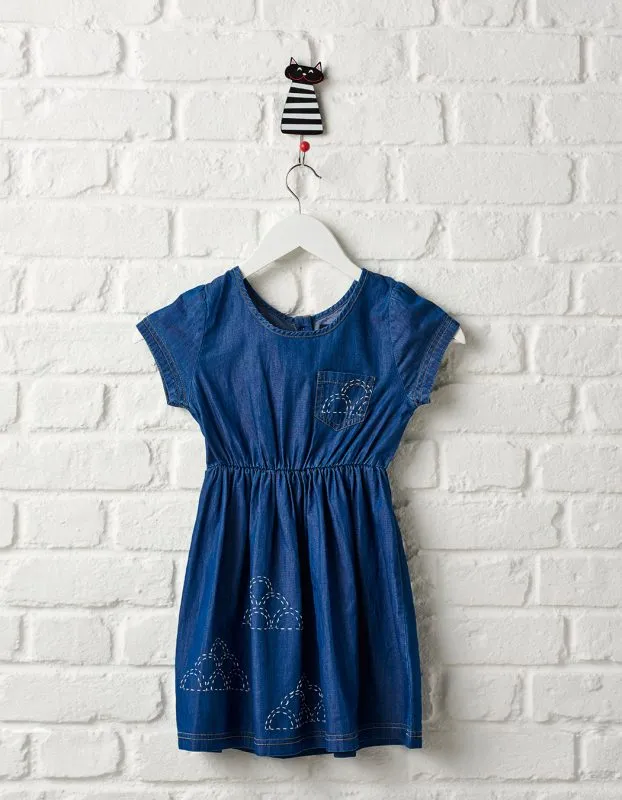
This design was created by Mollie Johanson for Simply Sewing magazine. It's a great way to embellish a plain garment, but would also look amazing stitched onto a tote bag or displayed in an embroidery hoop.
Download our Free Sashiko Embroidery pattern pdf to get started.
Upskill your stitching with Sashiko embroidery
By mastering the ancient art of sashiko embroidery, you'll be able to add intricate stitches to garments, homewares and quilts. These beautiful additions will give your projects an extra handmade touch.
Sashiko is also brilliant for upcycling and mending! Once you know how to do this simple stitch, you'll be using it in all your projects.
Looking for more Sashiko-inspired projects?
Today's Quilter has created an incredible ebook alongside sashiko expert Susan Briscoe. This Japanese Sashiko Special Edition PDF is full of tips, advice and wonderful projects like this one below!
Pick up this ebook over in the Gathered Shop.

